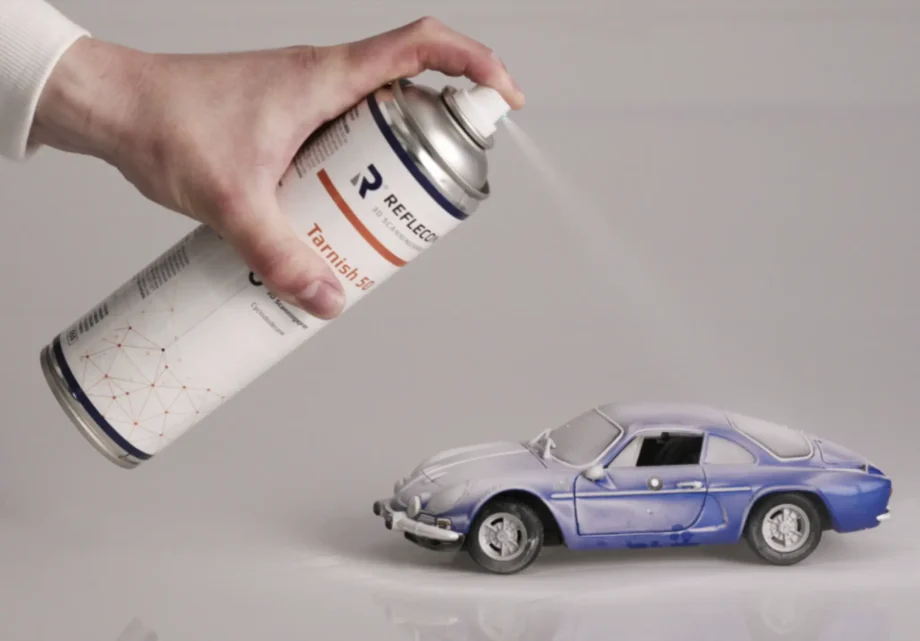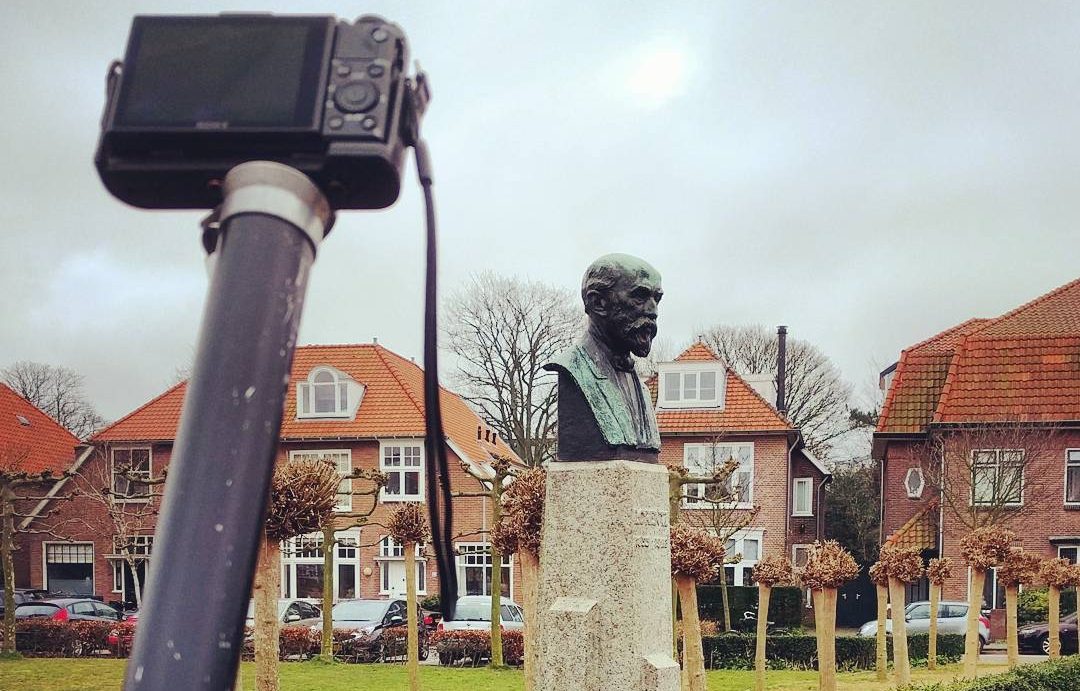Picture this: You’ve just started digitizing with your brand new 3D scanner, but you’re not getting good results. Naturally, having invested your hard-earned cash, you’re not very pleased.
There are several reasons why this could be the case. Dark, shiny, and reflective surfaces can be particularly difficult to capture as they either absorb or reflect 3D scanning light beams. In some cases, complex geometries can also be tricky to scan due to occlusion and shadows.
On the other hand, professional 3D scanners are getting better every year. Many now boast enhanced maneuverability and high-end specs like sub-millimeter accuracy and resolution. This begs an important question: how do you know when to use accessories like 3D scanning sprays to reduce interference and make object surfaces easier for scanners to detect?
To find out, we asked industry-leading 3D scanning spray developer REFLECON. Speaking exclusively to 3D Mag, REFLECON engineer Mario Montalti explain how, when, and where to use the company’s products to achieve the best possible results.
Which objects require 3D scanning spray?
Interestingly, Montalti says 3D scanning spray isn’t always a necessity. Using the 0.1mm accuracy, wireless Artec Leo as an example, he claims that “it’s capable of capturing a vehicle with no scanning spray at all.” If you wanted to capture one with a windshield, however, he adds that “you’d need spray, otherwise your scanner’s light beam would go straight through.”
In certain cases, spray can be necessary for high-end results, but there isn’t a one size fits all approach here. If your object isn’t shiny, black, or transparent, it’s better to use less spray than too much. As a general rule of thumb, just use spray where you’re not getting enough data.
When it comes to application, Montalti says a lot of people think that objects have to be “snow white” with spray, but you only need a “small, very thin layer to break the reflection.” Too much spray can even increase risk of external errors (those caused by environmental factors) appearing in your 3D scanning results, so it’s best avoided where possible.
Overall, it depends on which scanner you’re using as well as the geometry and scale of what you want to digitize. As a result, requirements can often change from project-to-project – at least there are dedicated scanning sprays to help you get the best results – as we’ll explore next.
How to choose a 3D scanning spray
REFLECON offers a whole range of 3D scanning sprays, so we’ll try to keep this section short and sweet. But essentially there are two main types: sublimating/evaporating and semi-permanent (which requires removal).
Vanishing sprays tend to be very popular as you don’t need to clean parts before or after, and they can be used around people, as well as scanners. With a thickness of around half a micron, these sprays don’t change measurement accuracy either, making them perfect for 3D scanning.
To make matters a little more complicated, evaporating sprays remain for a set time, but they’re often formulated to vanish at different intervals. Montalti says the delay can be useful for overnight projects, “but it really depends how much time you need” for data capture. By contrast, semi-permanent sprays are a bit messier, requiring clean up after usage – but because they stick around longer, they allow for even longer scanning sessions.
REFLECON offers a selection of vanishing sprays ranging from the TARNISH 30 which lasts 5-15 mins, to the 5-8 hour TARNISH 50. While each of its six sublimating products is equally suitable for capturing black, transparent, and highly reflective surfaces, they vary by material compatibility, with some better for glass objects, and others metal and plastic capture.
For those seeking a semi-permanent spray, REFLECON markets the water-based, solvent-free TARNISH 80, and TARNISH 90 for uncoated plastic objects. Obviously, there are plenty of other brands out there, but we won’t go through every possible option. REFLECON says its products are easy to apply, less odorous, and TiO2-free. But we’ll let our readers decide which is best!
Where is 3D scanning spray most beneficial?
We asked Montalti about industry-specific use cases – he emphasized how automotive customers are really taking advantage to maximize results. With evaporating spray, Montalti says automotive firms and aftermarket part manufacturers are “making car interiors much easier to scan,” particularly when it comes to high-accuracy quality control at the end of production.
He also highlights industrial reverse engineering and accident investigation applications. Spray can help capture broken parts in high detail to aid scan-to-CAD. At crash sites, investigators may also want to improve results without damaging evidence, making vanishing sprays ideal.
Aerospace represents another area of opportunity for 3D scanning spray. Blades and turbines are usually made from extremely reflective chrome alloys. When you consider the reflective nature of products in other industries like medical implants in healthcare, as well as consumer goods with glossy polished surfaces, the scope for further expansion is clear.
Forecasting further innovation
On his company’s future plans, Montalti chose to focus on how REFLECON is a subsidiary of MR Chemie, a manufacturer with cutting-edge product R&D labs that allow it to “make developments and find new solutions where they don’t exist yet” in the industry.
This facility accelerated the formulation of TOPOTRACK, REFLECON’s spray for scanning metal objects with complex geometries like holes, using high-resolution devices. According to the manufacturer, its product creates a “reference structure system” that helps scanners orient themselves – in some cases so effectively that users no longer require targets.
Overall, Montalti emphasized how REFLECON continues to seek out opportunities to improve 3D scanning results, whether it be through accessories or other new spray formulations. That said, he works hands-on every day with clients, and says success isn’t only about developing the ultimate product, it’s about helping to find the perfect solution to a scanning problem.
“We are very honest and open with our customers. We don’t tell them that absolutely anything is possible, there are naturally some limitations,” Montalti said. “We give them all the information they need and offer a dedicated solution – that’s why we have so many 3D scanning sprays.”
“We just need to understand what the client’s needs are,” he added. “What kind of material is it? What’s the size of the object? How much time do we need for your full scan, and maybe what kind of scanner, especially, what kind of light does the scanner use? And with this information, we are able to offer these users the right solution.”
So, that concludes our interview. Thanks for taking the time to read our article! If you have a potential use case, feel free to reach out to REFLECON directly for advice. To find out more about the technology, check out our wider 3D scanning coverage here.






